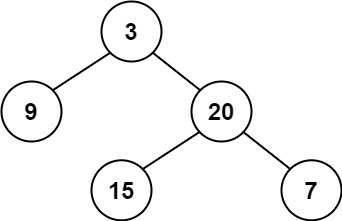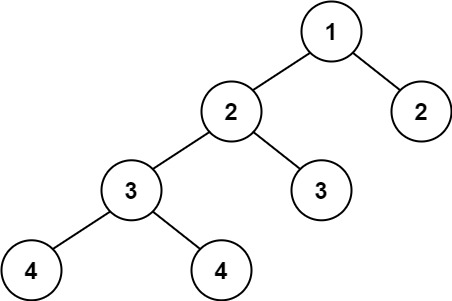Given a binary tree, determine if it is height-balanced.
For this problem, a height-balanced binary tree is defined as:
a binary tree in which the left and right subtrees of every node differ in height by no more than 1.
Example 1:

1
2
| Input: root = [3,9,20,null,null,15,7]
Output: true
|
Example 2:

1
2
| Input: root = [1,2,2,3,3,null,null,4,4]
Output: false
|
Example 3:
1
2
| Input: root = []
Output: true
|
Constraints:
- The number of nodes in the tree is in the range
[0, 5000].
-104 <= Node.val <= 104
自底向上的递归
碰到不平衡的节点就返回高度为-1.
当两个子树都平衡的时候才计算高度
1
2
3
4
5
6
7
8
9
10
11
12
13
14
15
16
17
18
19
20
21
22
23
24
25
26
27
28
29
30
31
32
33
34
35
36
37
38
|
class Solution {
private final static int NotBalanced = -1;
public boolean isBalanced(TreeNode root) {
return getDepth(root)[1] != NotBalanced;
}
private int[] getDepth(TreeNode root)
{
if(root == null)
return new int[]{0,0};
if(root.left == null && root.right == null)
return new int[]{1,0};
int[] leftTree = getDepth(root.left);
if(leftTree[1] == NotBalanced)
return new int[]{0, NotBalanced};
int[] rightTree = getDepth(root.right);
if(rightTree[1] == NotBalanced)
return new int[]{0, NotBalanced};
if(Math.abs(leftTree[0] - rightTree[0]) > 1)
return new int[]{0, NotBalanced};
return new int[]{Math.max(leftTree[0], rightTree[0]) + 1, 0};
}
}
|

